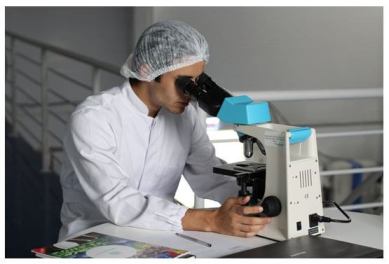I am working on research project in US, why patents are relevant?
A research project patent in US involves obtaining intellectual property protection for inventions or discoveries resulting from research endeavors. It allows researchers or organizations to secure exclusive rights to their innovative findings, providing a legal framework for commercialization, licensing, or further development of the invention.

Working on a research project in US?
In the world of research and development, there is always a risk of the “Re-inventing wheel”. Would you waste your R&D budget working on non-patentable ideas?
Many researchers get started with R & D efforts without much analysis and search performed for existing patents in the field of research.
You can start research this way, but when you invent something and when you are willing to secure your invention by means of intellectual property (patents), You may come know the unpleasant fact that the research project you are working on from so many days and months is already patented !!! and known to public.
All the hard work, time invested in research and development of the invention and plans to commercialize the invention goes waste, as you found out it already has been done a long time ago.
There are ways to ensure this does not happen with your research and development efforts:
The patent Information:
It is the information in patent applications and patents that are granted. Information like details of the inventor, the field of invention, the descriptions, claims along with related development in the field of invention. Such information in the patent document serves the following purposes:
- Helps in avoiding duplication of research and development on the same project and saves wasted efforts
- Builds on existing inventions
- Gives an idea about the latest development in the field of invention
- Inventions that are patented are identified and possible infringements could be avoided
- the existing patented invention of interested can be analyzed and approached for licensing
Having said that,
we have also seen many people working on particular invention getting discouraged up on finding hundreds and thousands of patent from their domain and similar to their technology. This could also be a mistake. when to get encouraged and when to get discouraged base on the results of the preliminary search conducted in “Idea incubation phase”
Getting a patent for an invention does not always require an invention to be something earth breaking solution, but many patents are awarded for incremental inventions too, which means most of the part of the invention would already be known to the public but a small (but significant) part which is called as ‘inventive feature’ is the novel and non-obvious part that could win patent for your invention.
So, prior art documents or patents that are already existing can be 95% similar to your invention Yet, if your invention has non-obviousness… and you can prove that your invention is better than existing ones then there is a strong possibility that you may get a patent for your invention.
The best way to take this judgment is to get help from a Patent attorney, The novelty search (also called as patentability search) is performed for the same reason, this patentability search, done right, can yield pretty fantastic results for your invention;
- It can tell you what part of your invention is already covered and what could be novel and non obvious feature
- it can tell you where you can focus you research work to get maximum level of protection with you patent
- and it gives a review about whether it is appropriate to proceed with patent filing process
Conclusion:
It is a must to do appropriate research “especially for patents” in the field in which you are planning to do research and hoping to get your research protected by the patent at a later stage.
another commonly asked question by a researcher (inventor) is;
Do I need a prototype or working model?
Most of the time this is not required, however, if the patent examiner is of opinion to require the working model of the invention, he will instruct so to the inventor/applicant. But such occurrences are rare. Most patent applications (more than 99%) proceed without actually requiring the working model or prototype of the invention.
